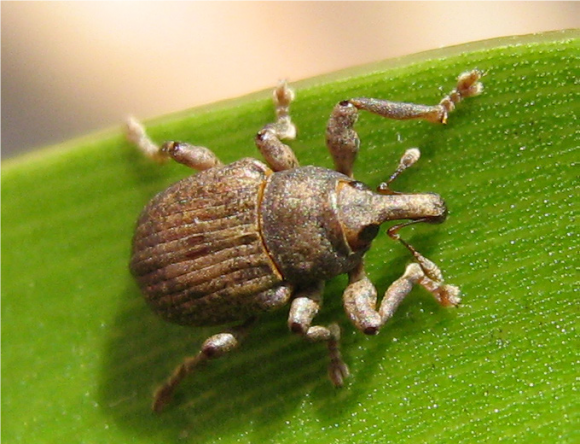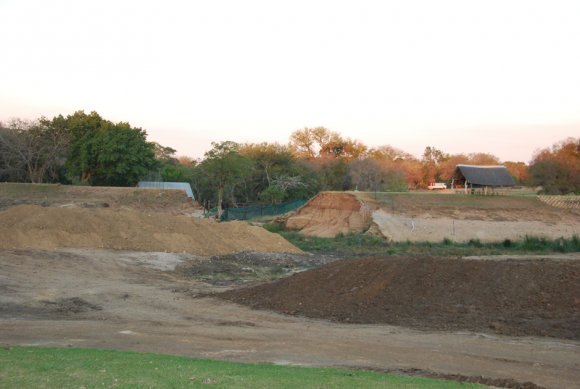12 November 2020 | By John S. Terblanche, Dan Rogers and Candice Owen
Water hyacinth (Eichhornia crassipes) is a widespread invasive species impacting a range of ecosystem services in South Africa, especially water quality and availability. To better control this aquatic weed, several biocontrol agents have been released – unfortunately with mixed success. Among several factors determining the success of biocontrol agents in controlling water hyacinth, the environmental match of the agent with the local environment is central. The insect’s thermal traits of performance and survival can markedly impact successful control in the field, especially if the insect is poorly suited to the conditions experienced.

The tiny weevil, Neochetina eichhorniae (pictured above), is probably the most widely established biocontrol agent on water hyacinth populations around South Africa. However, some N. eichhorniae populations have failed to adequately control water hyacinth populations, specifically those exposed to cold conditions.
This presents an intriguing opportunity to ask questions surrounding the thermal adaptation and suitability of populations to their local climate conditions, and the speed at which thermal traits can evolve under field conditions.
Master’s student Daniel Rogers and Dr Candice Owen at the Centre for Biological Control, Rhodes University, collaborated with C∙I∙B Core Team Member Prof John S. Terblanche at Stellenbosch University, to investigate whether two climatically-distinct populations of the biocontrol weevil N. eichhorniae differ in their low‐temperature physiology between water hyacinth-infested or long-term culture sites. In doing so, this allowed the researchers to test whether local‐climate adaptation of the weevil has occurred.
The team gathered a suite of behavioural and functional thermal performance metrics, such as the lowest temperature the weevils could maintain activity before succumbing to non-lethal chill coma. They also examined mortality rates at sub-zero temperatures, at what temperature the weevil’s body tissues froze, and whether this freezing event killed the weevils, since some insects are capable of freezing and surviving afterwards. This information was coupled with local climate records from the two sites that are climatically distinct.
John Terblanche says “The results were striking: Contrary to expectation, weevils from the warm locality were able to maintain activity and tolerate colder temperatures than the weevils from the colder site. These weevils are clearly ignoring the textbook on insect thermal adaptation!”
The team attributed these apparently contradictory outcomes to the poor nutrient quality of the plants at the cold site, driving low‐temperature performance variation that overrode any macroclimate variation among sites. Dr Owen speculates “Furthermore, the weevils from the cold sites may have adapted to survive wide‐temperature variability, rather than perform well under chilly conditions.” In contrast, the insects from the warm site have likely adapted to the stable, consistent conditions on well fertilized plants that they routinely experience.
Regardless of the causes, this study opens up a suite of important questions about the driving factors governing low temperature performance of biocontrol agents. It also serves as a useful reminder that insects’ performance in the field is affected by multiple biotic and abiotic factors that potentially interact. Armed with knowledge of how an insect’s thermal traits respond to different factors, like plant health and weather variation, this adds to the toolkit that can be exploited to enhance water hyacinth and other aquatic weed control.
Read the paper
Rogers, D.J, Terblanche, J.S., Owen, C. 2020. Low‐temperature physiology of climatically distinct south African populations of the biological control agent Neochetina eichhorniae. Ecological Entomology, https://doi.org/10.1111/een.12935
For more information, contact John Terblanche at jst@sun.ac.za



